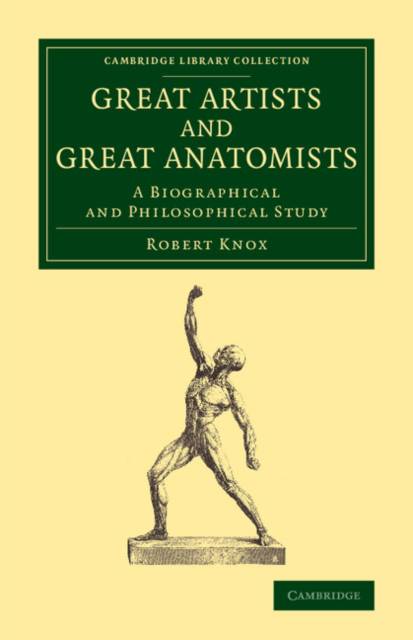
Je cadeautjes zeker op tijd in huis hebben voor de feestdagen? Kom langs in onze winkels en vind het perfecte geschenk!
- Afhalen na 1 uur in een winkel met voorraad
- Gratis thuislevering in België vanaf € 30
- Ruim aanbod met 7 miljoen producten
Je cadeautjes zeker op tijd in huis hebben voor de feestdagen? Kom langs in onze winkels en vind het perfecte geschenk!
- Afhalen na 1 uur in een winkel met voorraad
- Gratis thuislevering in België vanaf € 30
- Ruim aanbod met 7 miljoen producten
Zoeken
€ 72,95
+ 145 punten
Omschrijving
A gifted yet controversial anatomical teacher, Robert Knox (1791-1862) published this remarkable study in 1852. It explores the influence of anatomy on evolutionary theories and fine art respectively. The first part of the work discusses the lives and scientific insights of the eminent French naturalists Georges Cuvier (1769-1832) and Étienne Geoffroy Saint-Hilaire (1772-1844). Rejecting the explanations offered by natural theology, Knox maintains that descriptive anatomy can give answers to questions surrounding the origin and development of life in the natural world. The latter part of the book is concerned with the relation that anatomy bears to fine art, specifically the painting and sculpture of the Italian Renaissance. Entering the debate about the importance of anatomical knowledge in art, Knox focuses on 'the immortal trio' of Leonardo da Vinci, Michelangelo and Raphael. Henry Lonsdale's sympathetic biography of Knox has also been reissued in this series.
Specificaties
Betrokkenen
- Auteur(s):
- Uitgeverij:
Inhoud
- Aantal bladzijden:
- 232
- Taal:
- Engels
- Reeks:
Eigenschappen
- Productcode (EAN):
- 9781108065283
- Verschijningsdatum:
- 16/10/2013
- Uitvoering:
- Paperback
- Formaat:
- Trade paperback (VS)
- Afmetingen:
- 140 mm x 216 mm
- Gewicht:
- 299 g

Alleen bij Standaard Boekhandel
+ 145 punten op je klantenkaart van Standaard Boekhandel
Beoordelingen
We publiceren alleen reviews die voldoen aan de voorwaarden voor reviews. Bekijk onze voorwaarden voor reviews.









